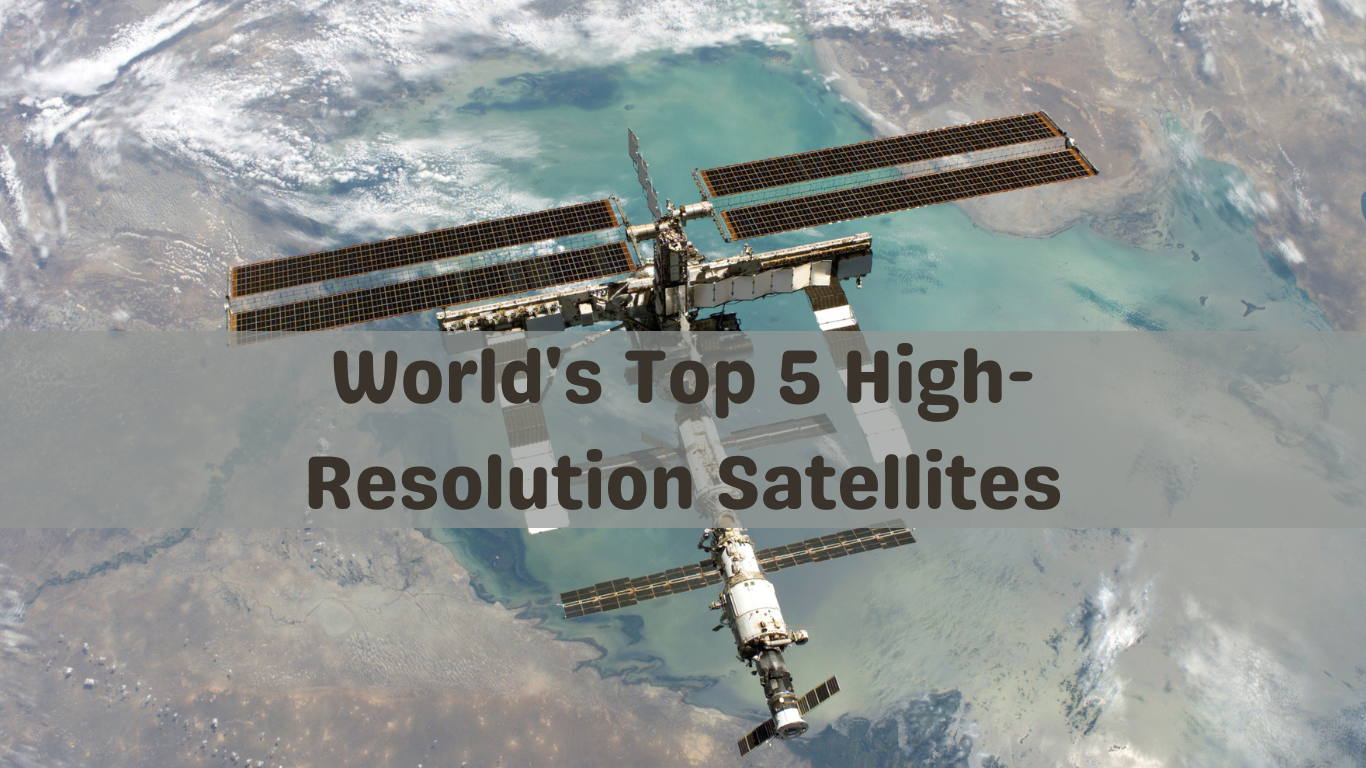Remote sensing technology has revolutionized our ability to observe and understand the Earth’s surface from space. High-resolution satellite imagery plays a crucial role in various fields, including environmental monitoring, urban planning, agriculture, and disaster management. In this article, we will explore the world’s top 5 high-resolution satellites and delve into their key features that make them indispensable for remote sensing applications.
- WorldView-3: WorldView-3, operated by DigitalGlobe (now Maxar Technologies), is one of the most advanced commercial Earth observation satellites. It offers a remarkable spatial resolution of 31 centimeters in panchromatic mode and 1.24 meters in multispectral mode. WorldView-3 has a wide spectral range, including visible, near-infrared, and shortwave infrared bands, enabling precise analysis of land cover, vegetation health, mineral identification, and urban infrastructure.

- GeoEye-1: GeoEye-1, also operated by Maxar Technologies, provides high-resolution imagery with a spatial resolution of 41 centimeters. It offers multispectral data in four spectral bands, allowing detailed analysis of land cover, vegetation indices, and coastal monitoring. GeoEye-1’s accuracy and precision make it valuable for mapping, change detection, and disaster response applications.

- Pleiades: Pleiades, operated by the French Space Agency (CNES), offers remarkable optical imaging capabilities. With a spatial resolution of 50 centimeters, Pleiades captures imagery in both panchromatic and multispectral modes. Its agility and high revisit capability make it ideal for time-sensitive monitoring, such as emergency response, infrastructure planning, and precision agriculture.

- WorldView-4: WorldView-4, another satellite operated by Maxar Technologies, provides high-resolution imagery with a spatial resolution of 31 centimeters. It offers multispectral data with bands similar to WorldView-3, enabling detailed analysis of land cover, vegetation health, and urban development. WorldView-4’s data consistency and quality make it a reliable source for critical decision-making in various domains.

- Sentinel-2: Sentinel-2, part of the European Union’s Copernicus program, is a constellation of satellites that provides high-resolution optical imagery. With a spatial resolution ranging from 10 to 20 meters, Sentinel-2 captures imagery in 13 spectral bands, including visible, near-infrared, and shortwave infrared. It offers global coverage, frequent revisits, and open data access, making it a valuable resource for large-scale land cover monitoring, agricultural assessment, and environmental change analysis.

Features Shared by These Satellites:
- High Spatial Resolution: All five satellites provide imagery with spatial resolutions ranging from 10 to 50 centimeters, allowing for detailed analysis and mapping.
- Multispectral Capabilities: Each satellite captures imagery in multiple spectral bands, enabling the extraction of valuable information about land cover, vegetation health, and other environmental factors.
- Revisit Frequency: These satellites offer regular revisit times, allowing for monitoring and change detection over time, which is crucial for tracking dynamic processes and events.
- Data Accessibility: While commercial satellites like WorldView-3, GeoEye-1, and Pleiades have restrictions on data access, the Sentinel-2 satellite provides free and open data, promoting widespread usage and collaboration.
The world’s top 5 high-resolution satellites, including WorldView-3, GeoEye-1, Pleiades, WorldView-4, and Sentinel-2, offer unparalleled capabilities for remote sensing applications. Their high spatial resolution, multispectral capabilities, frequent revisits, and data accessibility contribute significantly to our understanding of the Earth’s surface. By harnessing the imagery and data from these satellites, researchers, scientists, and professionals can make informed decisions, monitor environmental changes, and drive sustainable development across various domains.

